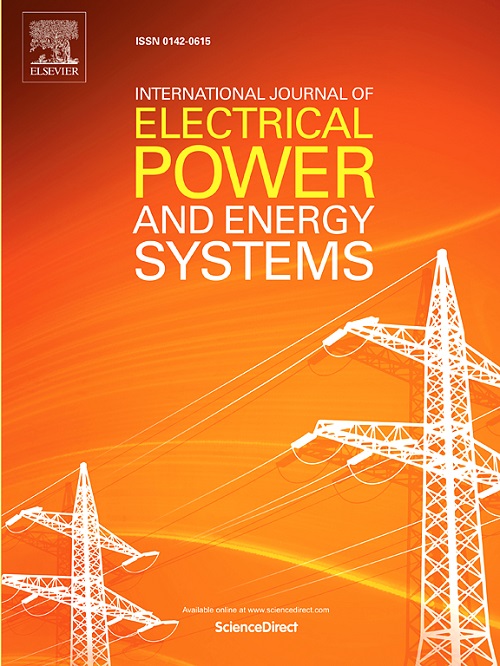Modified hard-constrained PINNs for physically consistent microgrid transient response modeling
IF 5
2区 工程技术
Q1 ENGINEERING, ELECTRICAL & ELECTRONIC
International Journal of Electrical Power & Energy Systems
Pub Date : 2025-05-16
DOI:10.1016/j.ijepes.2025.110726
引用次数: 0
Abstract
Accurate dynamic equivalence modeling of microgrids is critical for distribution system operators, yet existing methods face trade-offs between physical consistency and scalability in high-dimensional parameter spaces. This work proposes a physically consistent parameter tuning paradigm for microgrid transient equivalence modeling, where the grey-box model structure serves as prior physical knowledge, and the hard-constrained PINN enables automated discovery of high-dimensional parameters under nonlinear dynamics. Compared to conventional ’structure-first’ grey-box model for transient response analysis, our approach unifies physics fidelity with data-driven adaptability, achieves a new balance between interpretability and generalization in microgrid equivalent modeling. The key innovation lies in the implementation of physically consistent parameter tuning for microgrid transient analysis, where the hard-constrained PINN acts as a differentiable simulator to navigate high-dimensional spaces while strictly adhering to dynamic ordinary differential equations (ODEs). The paradigm eliminates conventional manual tuning problems through gradient-aware exploration of non-convex landscapes, resolving the trade-off between fidelity and measurement noise adaptation. Experimental validation on a real-time digital simulation (RTDS) control-hardware-in-loop (CHIL) platform demonstrates that the PINN-based parameters improve dynamic response accuracy and reduce error margins compared to traditional methods.
物理一致性微电网瞬态响应建模的改进硬约束pinn
准确的微电网动态等效建模对配电系统运营商至关重要,但现有方法面临着物理一致性和高维参数空间可扩展性之间的权衡。本研究为微电网瞬态等效建模提出了一种物理上一致的参数调整范式,其中灰盒模型结构作为先验物理知识,硬约束PINN能够在非线性动力学下自动发现高维参数。与传统的“结构优先”灰盒模型进行瞬态响应分析相比,我们的方法将物理保真度与数据驱动的适应性相结合,在微电网等效建模的可解释性和泛化之间实现了新的平衡。关键创新在于实现微电网瞬态分析的物理一致参数调整,其中硬约束PINN作为可微模拟器来导航高维空间,同时严格遵守动态常微分方程(ode)。该范例通过对非凸景观的梯度感知探索消除了传统的手动调谐问题,解决了保真度和测量噪声适应之间的权衡。在实时数字仿真(RTDS)控制-硬件在环(CHIL)平台上的实验验证表明,与传统方法相比,基于pup的参数提高了动态响应精度,减小了误差范围。
本文章由计算机程序翻译,如有差异,请以英文原文为准。
求助全文
约1分钟内获得全文
求助全文
来源期刊
CiteScore
12.10
自引率
17.30%
发文量
1022
审稿时长
51 days
期刊介绍:
The journal covers theoretical developments in electrical power and energy systems and their applications. The coverage embraces: generation and network planning; reliability; long and short term operation; expert systems; neural networks; object oriented systems; system control centres; database and information systems; stock and parameter estimation; system security and adequacy; network theory, modelling and computation; small and large system dynamics; dynamic model identification; on-line control including load and switching control; protection; distribution systems; energy economics; impact of non-conventional systems; and man-machine interfaces.
As well as original research papers, the journal publishes short contributions, book reviews and conference reports. All papers are peer-reviewed by at least two referees.

 求助内容:
求助内容: 应助结果提醒方式:
应助结果提醒方式:


